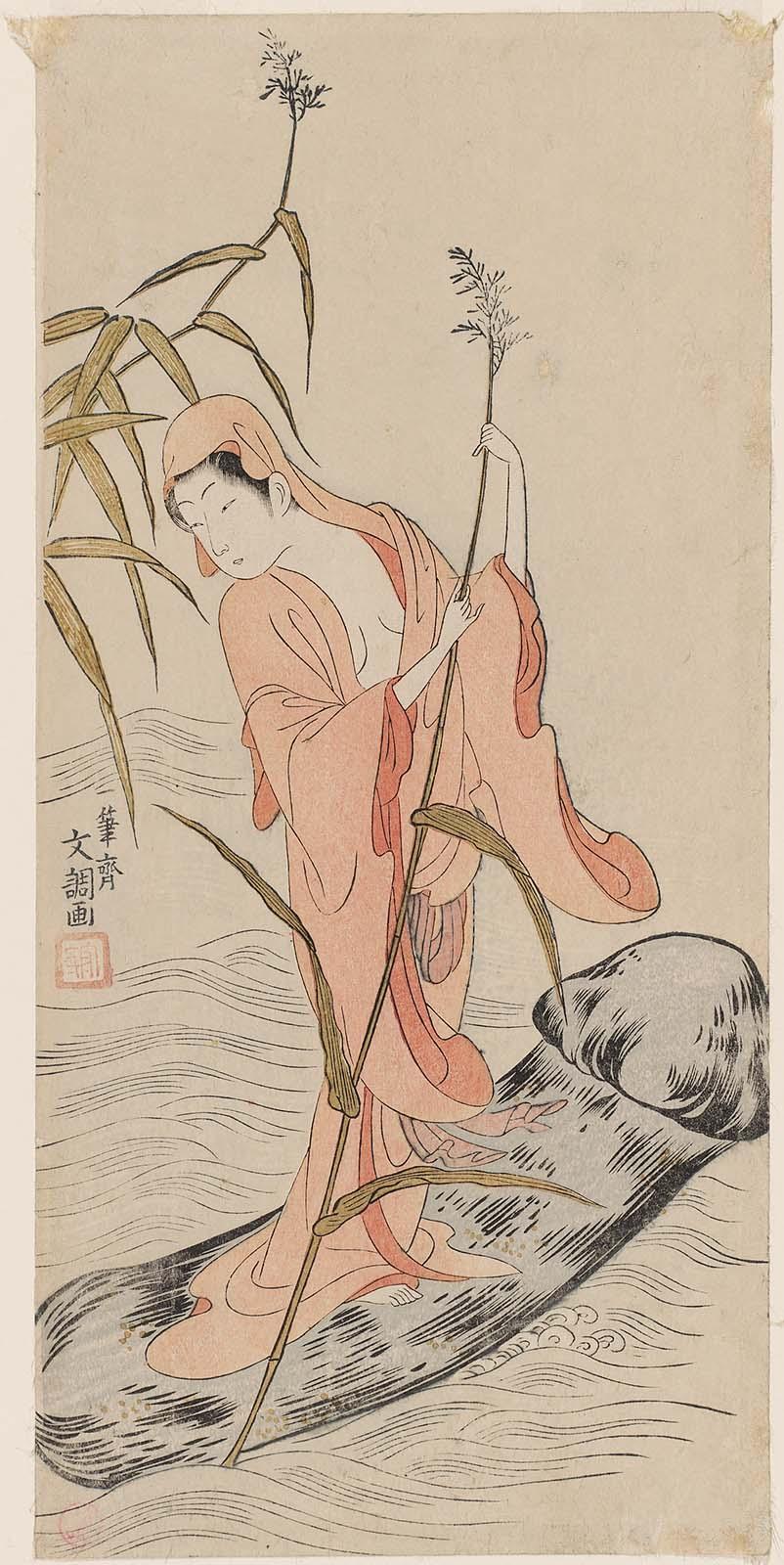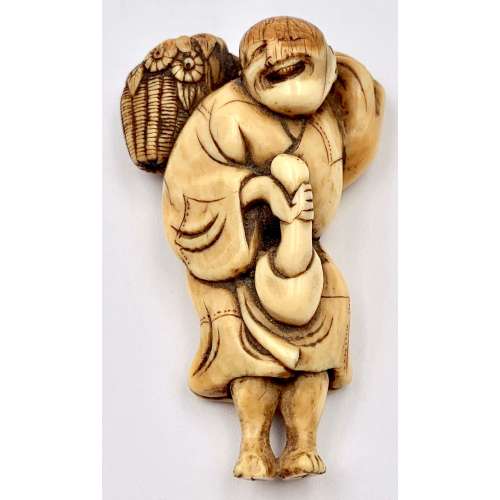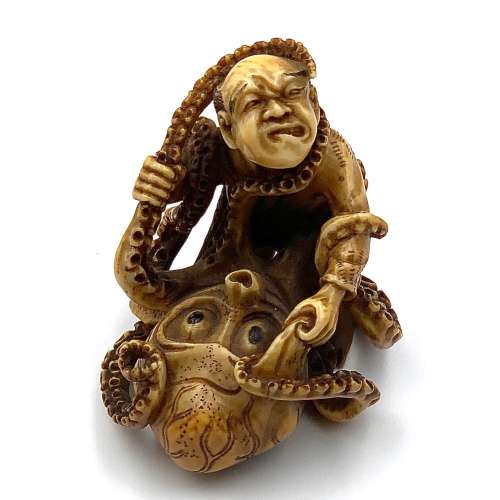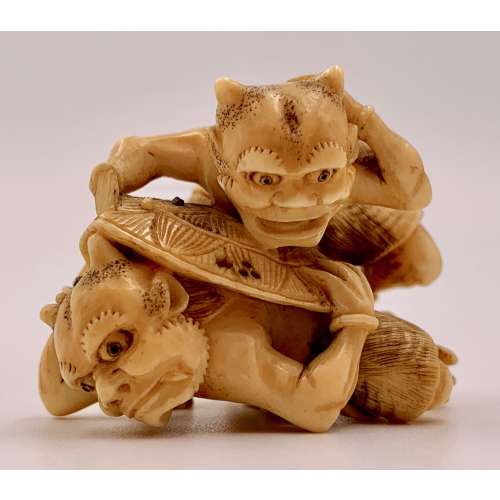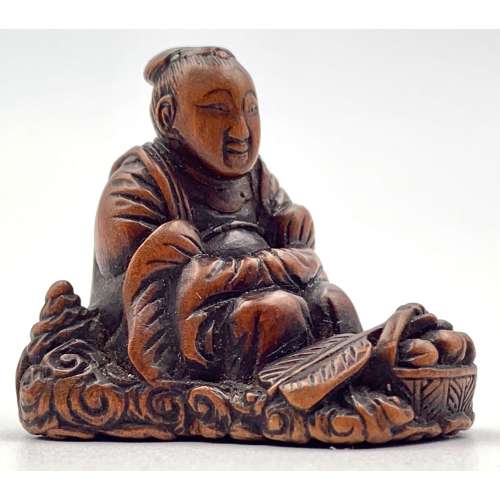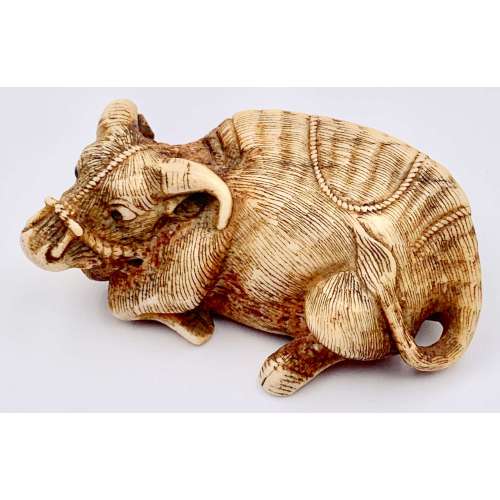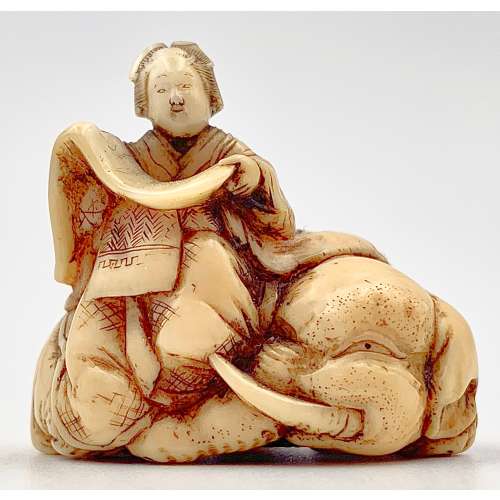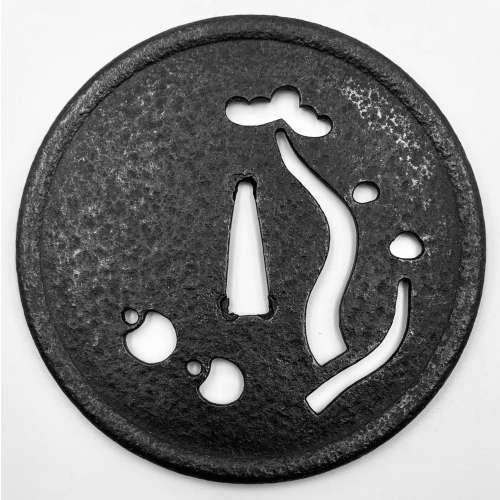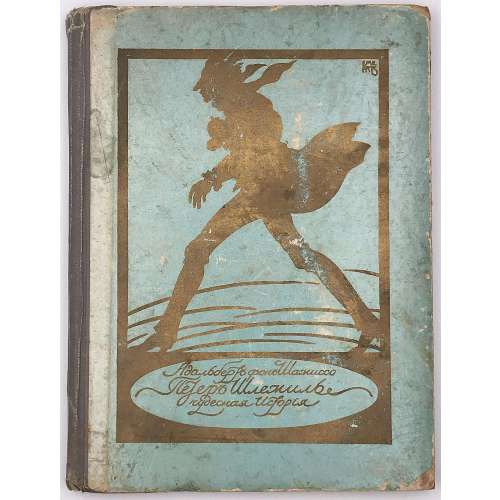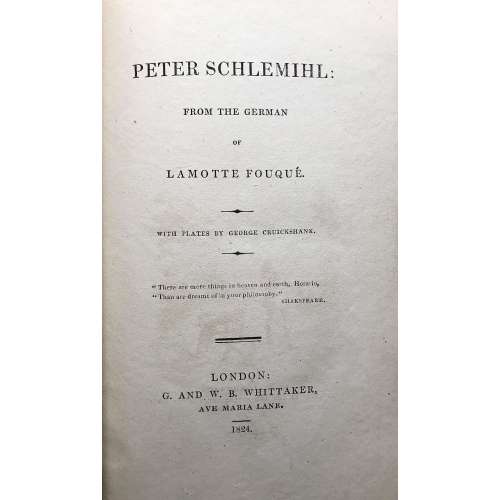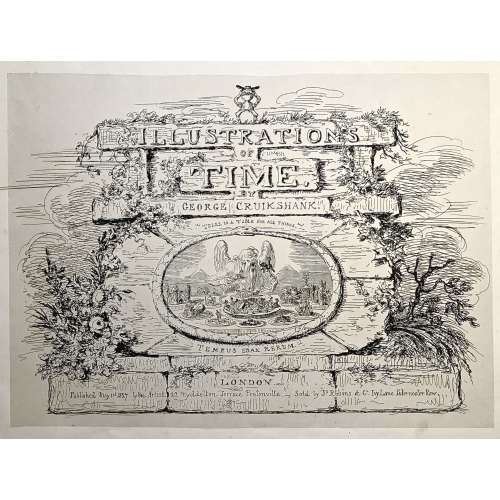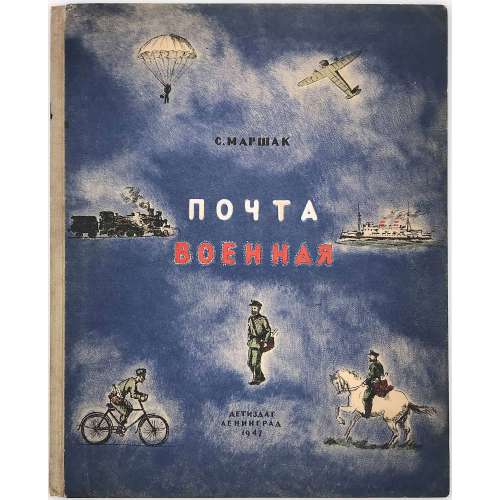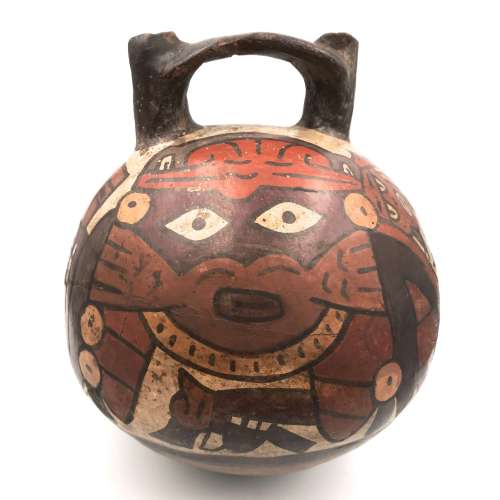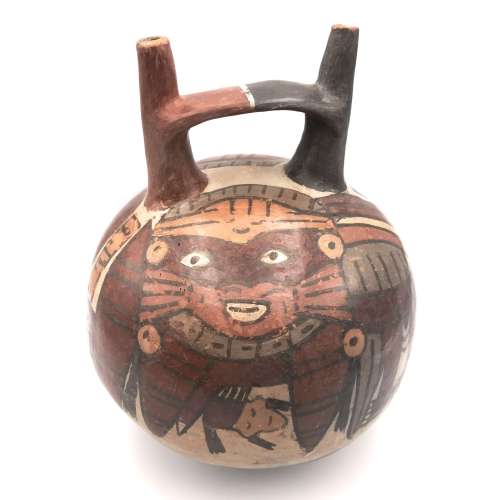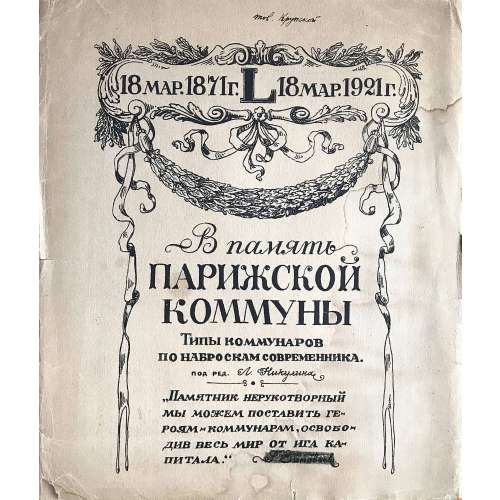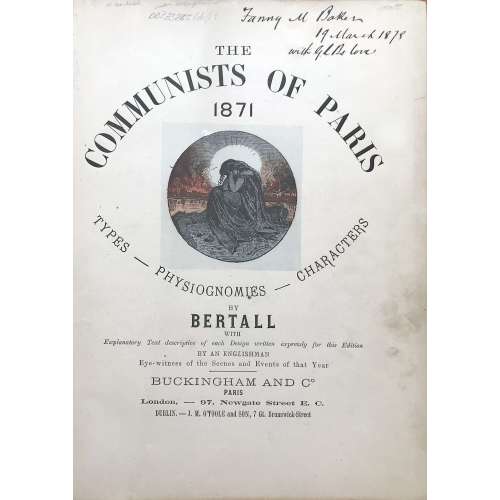Untrimmed fan print (uchiwa-e), 231 x 300 mm.
Title: A geisha eating edamame aboard the boat of the Atari-ya teahouse.
Series: Three summer women [九夏三婦久] (
Kyūka sanfuku).
Artist:
Utagawa Kunisada [歌川 国貞] a.k.a. Utagawa Toyokuni III [三代歌川豊国] (Japanese, 1786 – 1865).
Artist:
Utagawa Kunihisa II [歌川国久] a.k.a. Katsuda Hisatarō, Ichiunsai, Ritchōrō, Toyonobu, Yōryūsai, Yōsai] (Japanese, 1832 – 1981).
Block cutter:
Yokokawa Horitake [横川彫武] a.k.a.
Yokokawa Takejiro [横川竹二郎] (Japanese, fl. 1860s).
Publisher:
Ibaya Senzaburō [伊場屋仙三郎] (Japanese, fl. C. 1845 – 1847)
Combined date seal and kiwame censor seal: 1860 (Ansei 7 / Man'en 1 from 18/III).
Signed:
Toyokuni ga in toshidama cartouche, and
Kunihisa ga.
Provenance: The Collection of Paul F. Walter, Christie's, New York, 2017, lot 341; sol together with 5 other fan prints for $25,000. Before: Israel Goldman, Japanese Prints, Catalogue 9, 2003, no. 35.
Ref: [
LIB-1693.2018] The Collection of Paul Walter. — NY: Christie's, 2017, p. 363.
Ref:
Israel Goldman, Catalogue 2018, № 52: "Utagawa Kunisada (1786-1865) and Utagawa Kunihisa II (1832-1891) A Geisha Eating Edamame Aboard the Boat of the Atari-ya Teahouse. From the series Kyuka sanfuku (Three Summer Women). 1860. Fan print. 22.7 x 29.6 cm. Provenance: Israel Goldman, Japanese Prints, Catalogue 9, 2003, no. 35. The Collection of Paul F. Walter, Christies, New York, 201, lot 341. Fine impression, colour and condition. The title is a pun on “kyuka sanpuku” meaning the hottest point of the summer. The background view is by Kunisada’s pupil Kunihisa."
